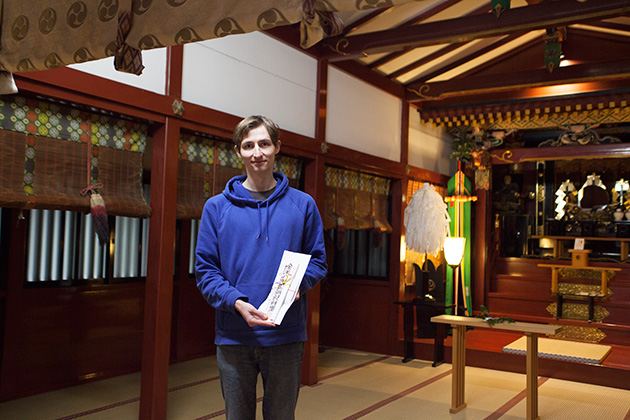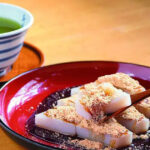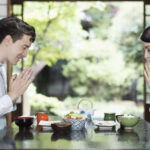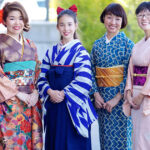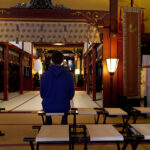Spirituality in Japan is a very complex topic to tackle. Although the majority of people subscribe to Shinto and Buddhism, only one third of the population actually consider themselves as believers. Nevertheless, the traditions remain very strong. Traditions such as the first visit of the New Year to the shrine (Hatsumōde) or having an alter set up in your house.
Today, I shall tell you about a Shinto tradition: gokitou.
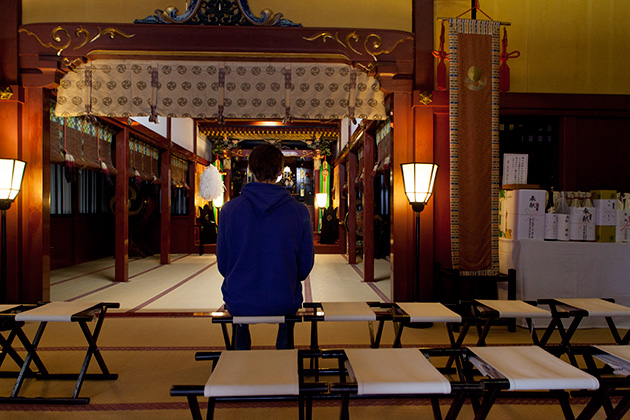
A few days ago, I went to the Konnoh Hachimangu Shrine, in Shibuya. Only once had I been inside a Shinto shrine before. For a wedding! (Salut Loïc & Maki!)
Let’s get ready for Gokitou
Gokitou means praying at a shrine. You can pray for the blessing of a newborn, for protection against evil or more simply… for road safety. Once you “aimed” your prayer, you have to prepare a noshibukuro.
Noshibukuro is an envelope inside which you put money each time you participate in a traditional happy event such as a wedding.
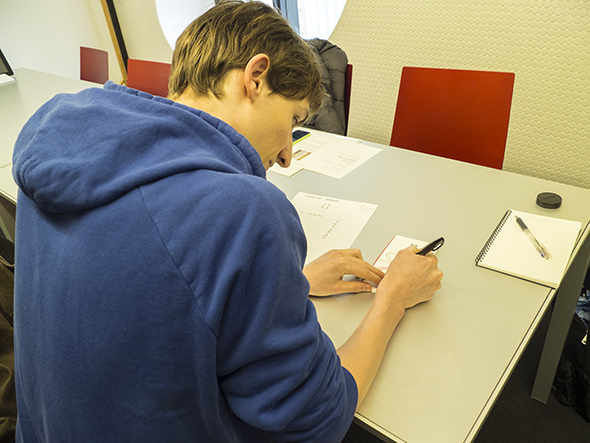
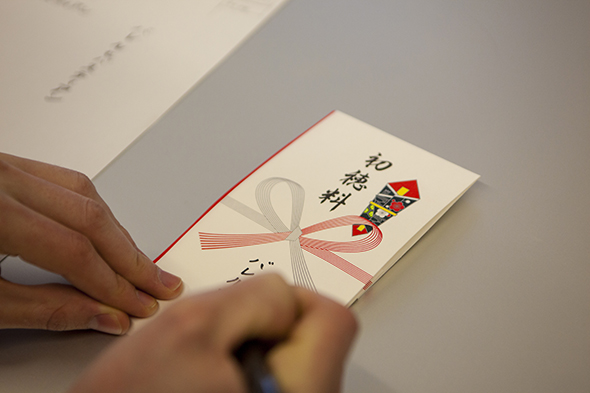
Don’t forget to write your name – vertically, that is – on the lower part of the envelope and the expression hatsuho-ryo on the top. Hatsuho-ryo means the first ears of rice. In the old days, people used to offer rice/harvest to kami. Today, it has changed to money.
Norinaga Motoori, a scholar of the late 18th century, gave this explanation of kami: “whatever seemed strikingly impressive, possessed the quality of excellence and virtue, and inspired feeling of awe was called kami.”
Last step of the preparation, you need to fold the noshibukuro in a wrapping cloth. Beware you innocent Shinto beginners, there is a very specific way to wrap it. It is called furoshiki or fukusa. Please follow the instructions given on this webpage, www.studyjapan.go.jp/mm/ffs/007/en/furoshiki/furoshiki/wrap01.html
I said “Beware”…!
Good, we are finally ready for batt… for praying. Peaceful thoughts, peaceful thoughts… Here we go to the Konnoh Hachimangu Shrine. First of all, a few words about the place.
Konnoh Hachimangu Shrine
Konnoh Hachimangu Shrine was enshrined on the 15th day of the first month in the year 6 of the Kanji era (1092) during the reign of Emperor Horikawa, the 73rd emperor of Japan. Emperor Horikawa awarded the name of Shibuya to a clan for dismissing intruders from the Imperial palace. The Shibuya clan established its main residence around Hachimangu, and worshiped the shrine as its family guardian. The establishment is considered to be the birth of Shibuya.
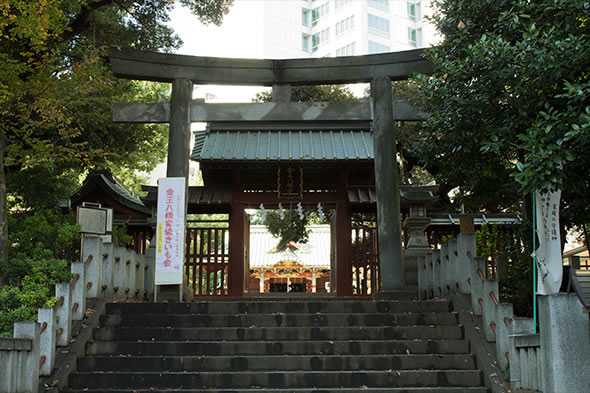
Gokitou Begins
Alright, let’s talk about gokitou. First of all, this private prayer is conducted upon request: make the inquiry by phone. I was welcomed by the shinshoku (the shrine priest). He made sure of all the details I had given him. BEWARE (oh no, not again…), be really specific about your name and address: do you spell it with or without accents? Where are the upper-case letters? What is the correct way to pronounce your address? All of these details will be used at some points of the ceremony.
Once everything is clear, take the noshibukuro out of its wrapping cloth and hand it over to the shinshoku.
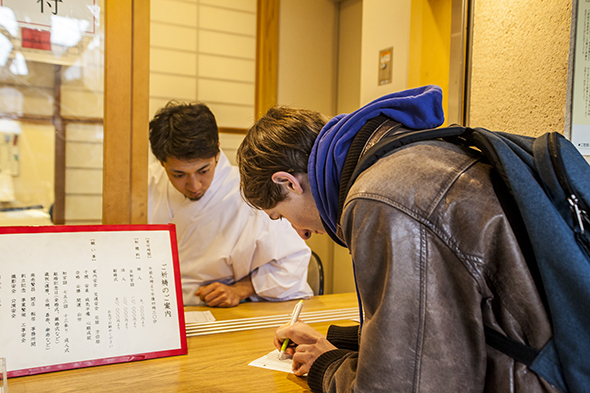
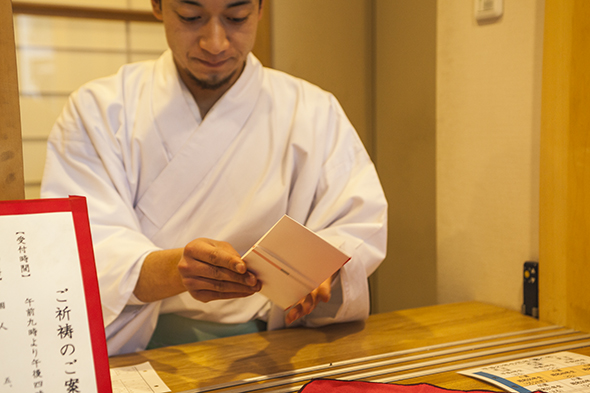
Then, you wait for him to get ready. Once the priest put on his ceremonial dress, he invites you to follow him. Right before the prayer, you must purify your hands and your mouth (without a ladle here, unlike at the shrine entrance).
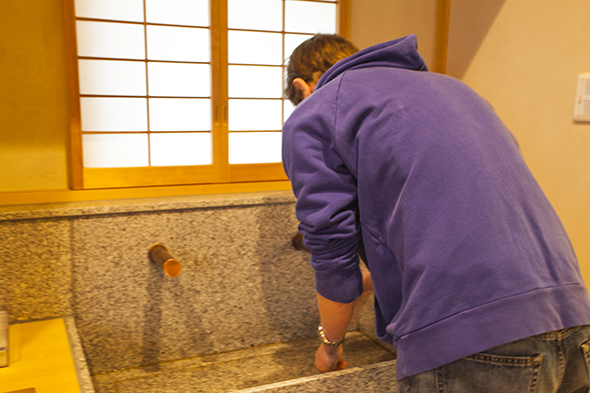
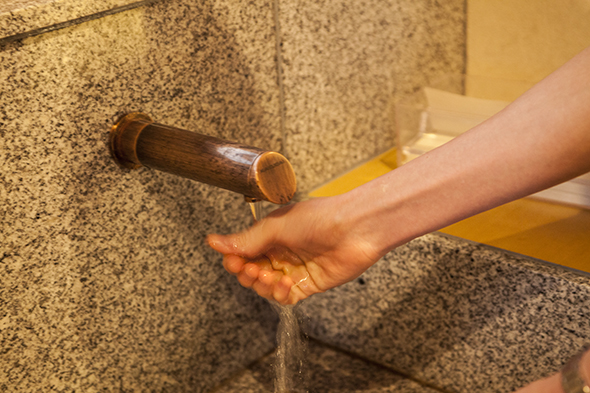
Finally, the ceremony can begin!
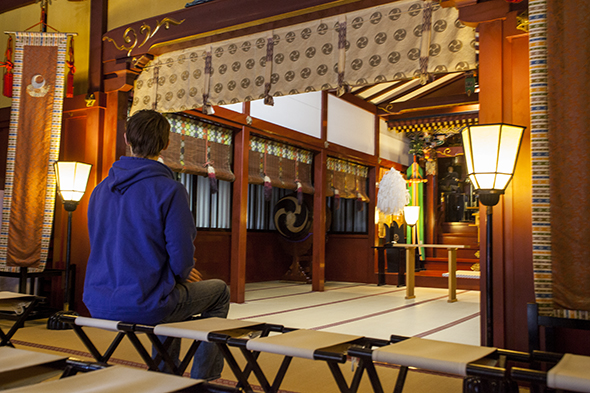
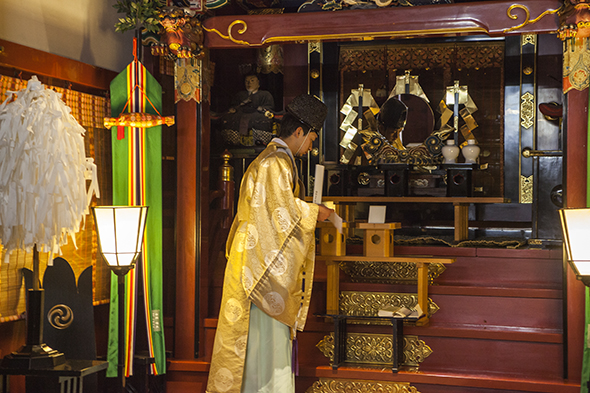
For a the gaijin I am, it is merely impossible to describe what happens during the prayer, without showing disrespectful ignorance. Instead, I shall try to give you an idea through pictures!
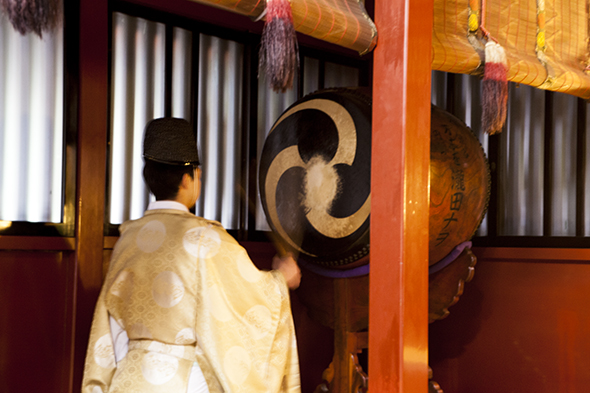
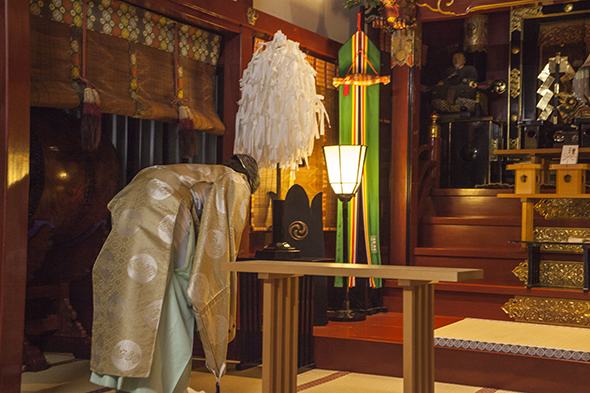
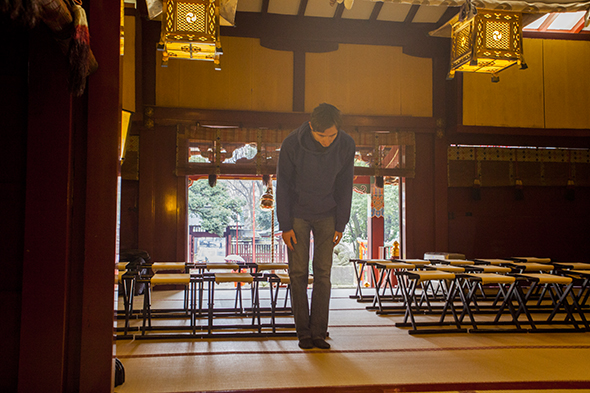
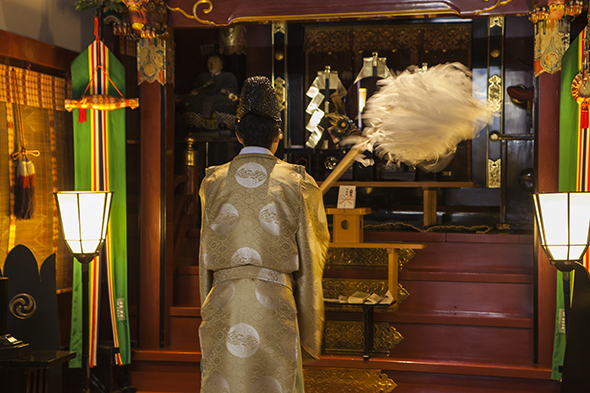
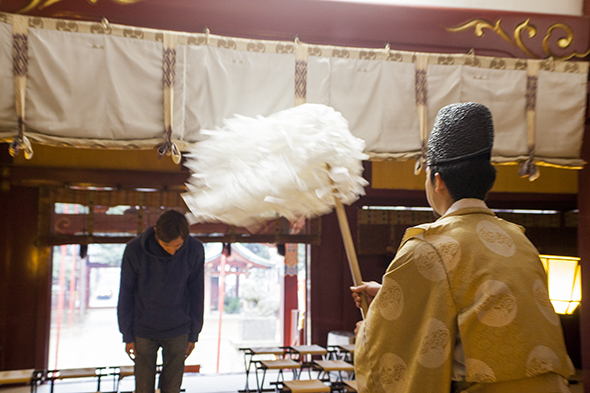
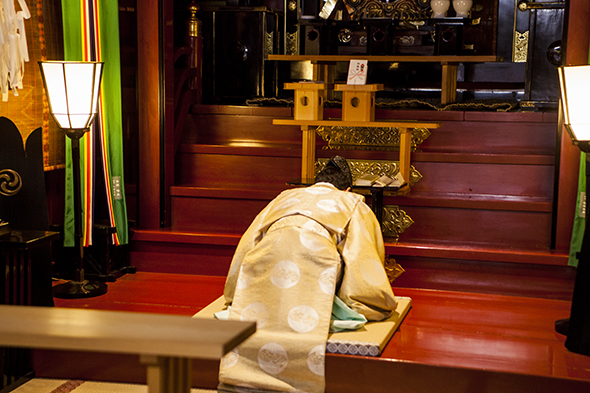
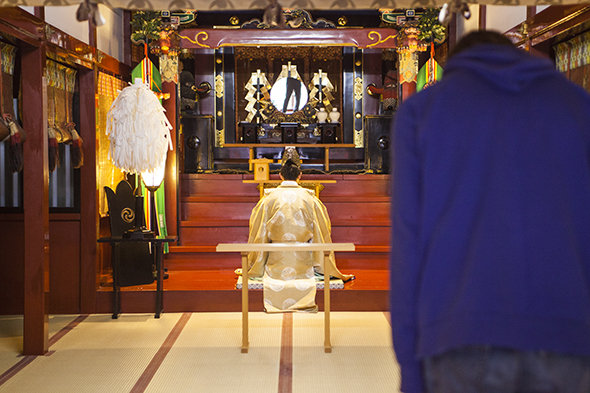
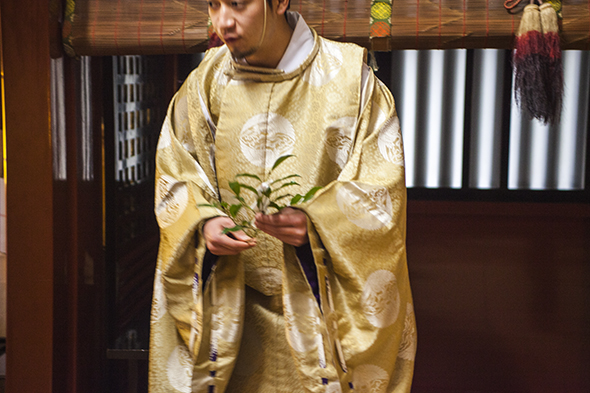
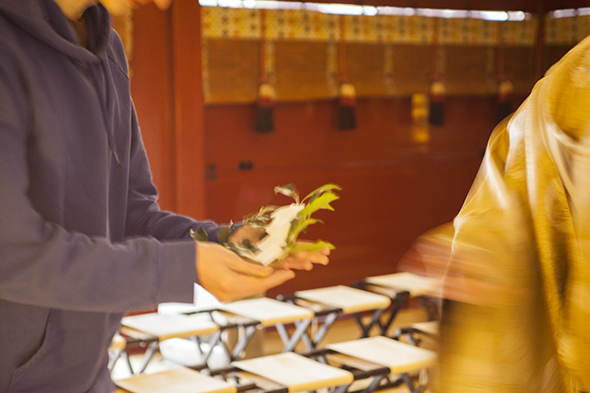
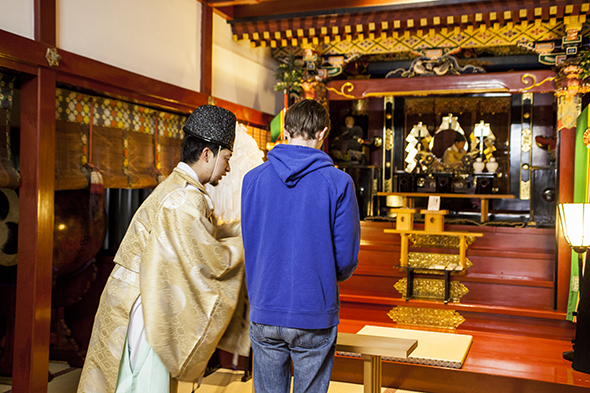
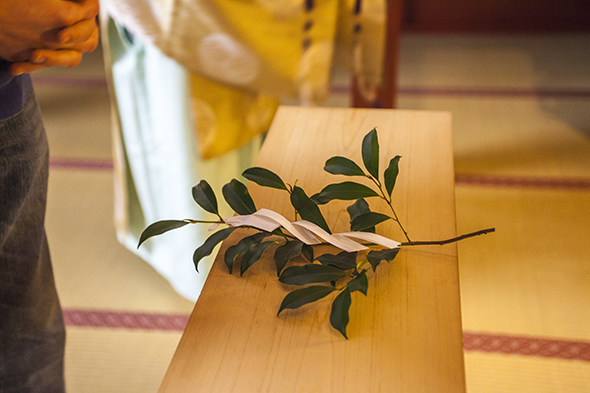
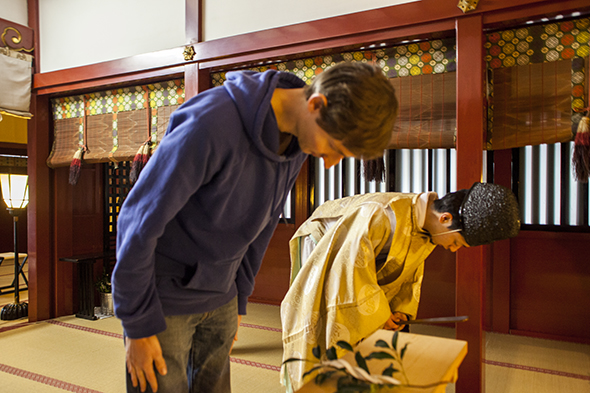
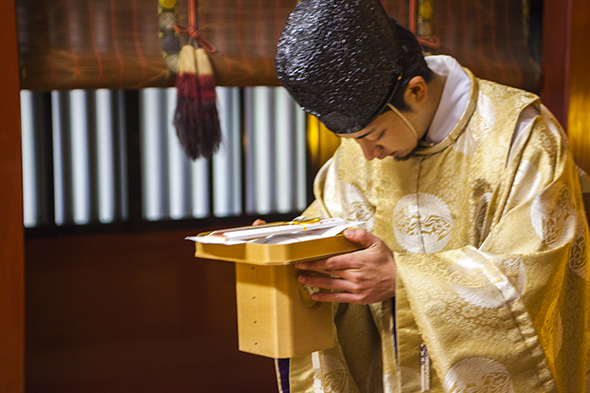
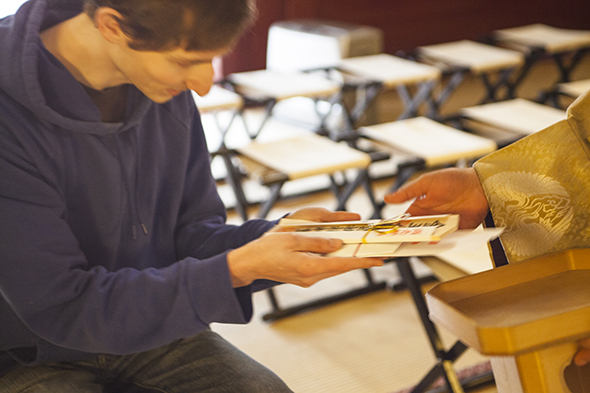
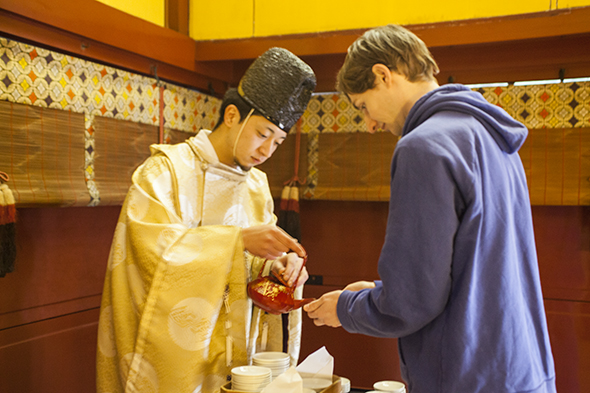
Here you are! End of the prayer. In the end, the priest comes to you and gives you an ofuda.
It was a very special moment, obviously very spiritual. All I could feel was humility and respect during the prayer. It was a meeting of cultures and spiritualties.
See you at the next article!
